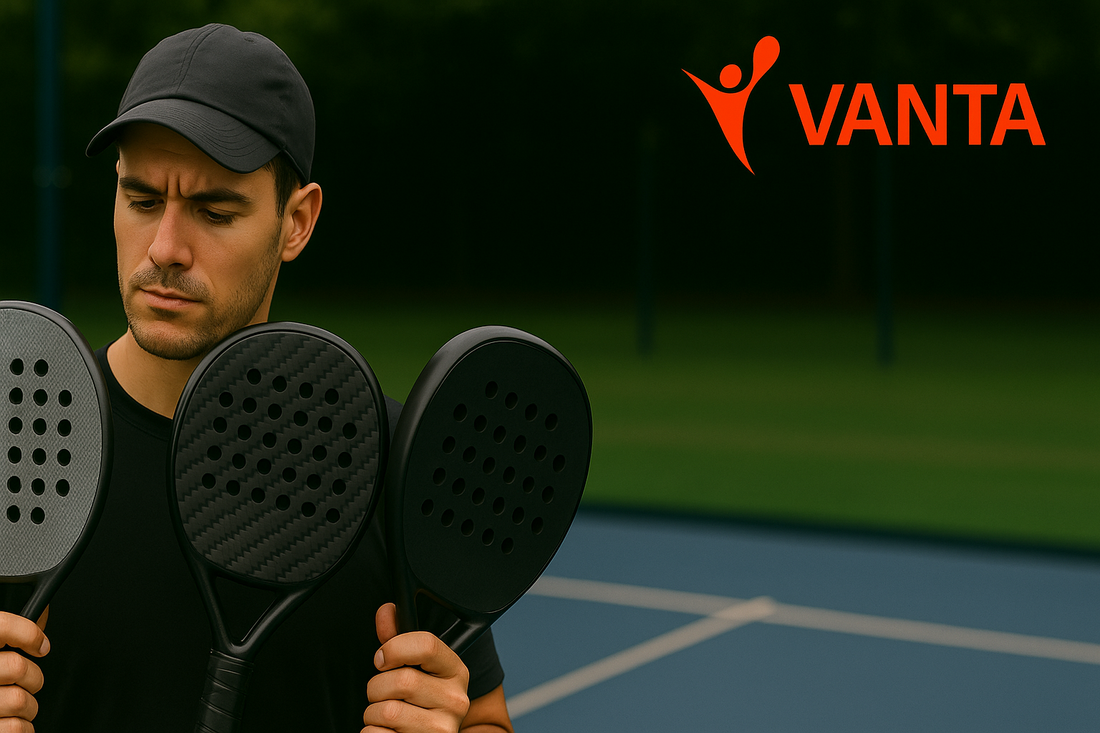
Carbon Fibre, Fibreglass, and Foam? Breaking Down Padel Racket Materials
Carbon Fibre, Fibreglass, and Foam? Breaking Down Padel Racket Materials
Choosing the right padel racket material can feel overwhelming. For beginners and keen improvers alike, understanding the differences between carbon fibre, fibreglass, and foam in padel racket construction is key to finding a racket that suits your style and improves your game.
Let's break down the key materials used in padel rackets, exploring their construction, advantages, and what to consider when choosing your next racket.
Understanding Padel Racket Materials
Padel rackets generally combine a few primary materials: the frame and face are typically made from carbon fibre or fibreglass, while the core is usually foam. Each component plays a specific role in performance, durability, and feel.
The Frame and Face: Carbon Fibre vs Fibreglass
Carbon Fibre
- Composition: Layers of carbon fibre fabrics bonded with epoxy resin.
-
Characteristics:
- High stiffness and strength-to-weight ratio.
- Great durability and impact resistance.
- Provides power and precise control.
- Feel on the court: Offers a solid, responsive hit with less vibration.
- Typical price point: Generally higher due to costly materials and production.
Fibreglass
- Composition: Woven fibreglass fabrics bonded with resin.
-
Characteristics:
- More flexible and slightly softer than carbon fibre.
- Lightweight, but less stiffness.
- Provides a more forgiving feel, absorbing shocks better.
- Feel on the court: Softer touch, ideal for players seeking control with less power.
- Typical price point: More affordable, often found in beginner to intermediate rackets.
The Core: Foam Types
- Most padel rackets use an EVA (Ethylene Vinyl Acetate) foam core.
- Properties vary by foam density:
- Soft foam: Better shock absorption, enhances control but less power.
- High-density foam: Offers more power and stability but less comfort.
- The core affects the racket’s responsiveness and vibration damping.
How Materials Affect Performance
| Material | Power | Control | Durability | Comfort | Price Range |
|---|---|---|---|---|---|
| Carbon Fibre Frame | High | High | Excellent | Moderate | Mid to high |
| Fibreglass Frame | Moderate | Moderate to High | Moderate | High (shock absorption) | Budget to mid |
| Soft Foam Core | Low to Moderate | High | Variable | High | Varies |
| High-density Foam | High | Moderate | High | Moderate | Varies |
Choosing the Right Material: Practical Checklist
-
Playing Style
- Power player: Prefer carbon fibre frame + high-density foam.
- Control/finesse player: Consider fibreglass frame + soft foam core.
-
Skill Level
- Beginner: Fibreglass rackets offer forgiveness and comfort.
- Improver: Carbon fibre rackets provide more performance edges.
-
Budget
- Entry level: Fibreglass frames are cost-effective.
- Investment: Carbon fibre for longevity and performance.
-
Physical Comfort
- Any history of arm/elbow discomfort: Softer cores and fibreglass faces reduce vibration.
-
Durability Needs
- Frequent play outdoors or hard courts: Carbon fibre for resistance to impacts.
Common Mistakes When Selecting Padel Racket Materials
- Ignoring core density — Many focus only on frame material, but foam density critically affects feel.
- Assuming carbon fibre always means better — Carbon fibre offers power but can be harsh for beginners.
- Overlooking comfort — Fibreglass rackets often better absorb shock, protecting joints.
- Choosing solely on price — A cheap fibreglass racket with the wrong foam could harm technique.
- Not trying before buying — Material feel is subjective—testing rackets is invaluable.
Pro Tips for Beginners & Improvers
- Start with a fibreglass racket to develop technique with less risk of injury.
- Upgrade to carbon fibre as your power and control demands increase.
- Match your foam core density to your arm strength and style—don’t pick the hardest foam if you prefer touch.
- Consider hybrid rackets that combine carbon fibre and fibreglass layers for balance.
- Always inspect racket manufacturing quality; poor bonding and resin work affect longevity more than material alone.
FAQs
Q1: Are carbon fibre rackets better than fibreglass ones?
A: Not necessarily. Carbon fibre provides more power and durability, while fibreglass offers better control and comfort. Your choice should match your skill level and playing style.
Q2: What foam core is best for beginners?
A: Beginners benefit from softer EVA foam cores, which absorb more shock and provide a forgiving feel, reducing strain during learning.
Q3: Can I mix materials in padel rackets?
A: Yes, many rackets use a combination of carbon fibre and fibreglass layers to balance durability, power, and softness.
